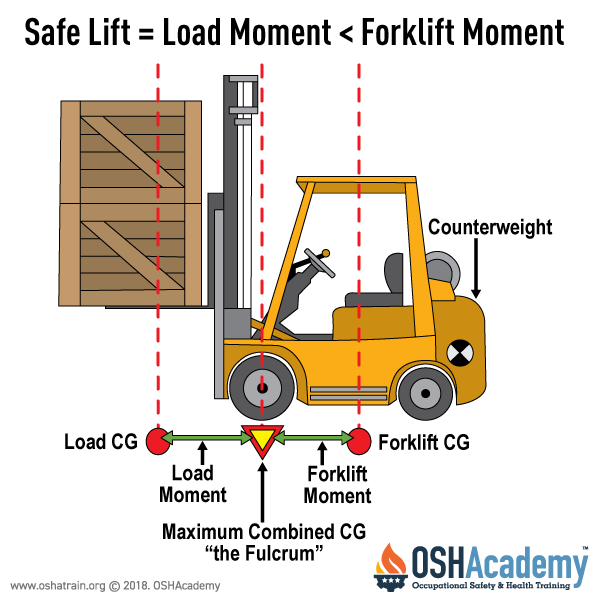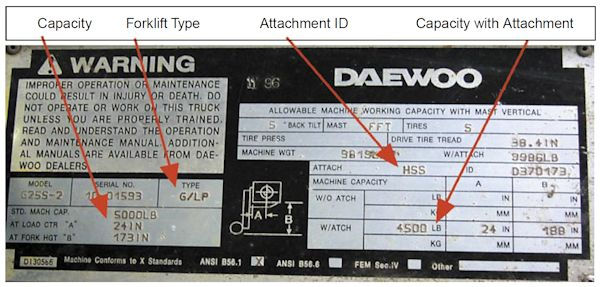Moment
A moment is calculated in inch-pounds. It equals the distance (in inches) x weight (in pounds) from a fulcrum to each end of the beam.
There are two important moment calculations that determine the stability of the forklift load.
Forklift Moment
The forklift moment is the distance from the fulcrum at the center of the front wheel to the center of gravity (CG) of the unloaded forklift multiplied by (x) the capacity rating of the forklift.
Forklift moment = distance from fulcrum to CG x capacity of forklift.
Load Moment
The load moment is the distance from the fulcrum to the forklift CG of the load multiplied by (x) the weight of the load in pounds.
Load moment = distance from fulcrum to load CG x weight of load.
Whether a forklift will safely carry a load or tip over can be determined by comparing the forklift moment and the load moment. To be safe, the load moment must be less than the forklift moment.
Capacity Plates
Forklifts have a capacity plate to tell the user what loads are safe to lift. If the plate says the capacity is 30,000 pounds or less then that capacity is rated for a load with a center of gravity 24" from the face of the forks. Most pallets are 48" x 48" and have a 24" CG if the weight of the load is evenly distributed. If the forklift capacity is greater than 30,000 pounds then the label will rate the load at a 36" or 48" center of gravity since larger forklifts usually lift physically larger loads.
Knowledge Check Choose the best answer for the question.
1-4. Where can the forklift operator find out what loads are safe to lift?
You forgot to answer the question!


